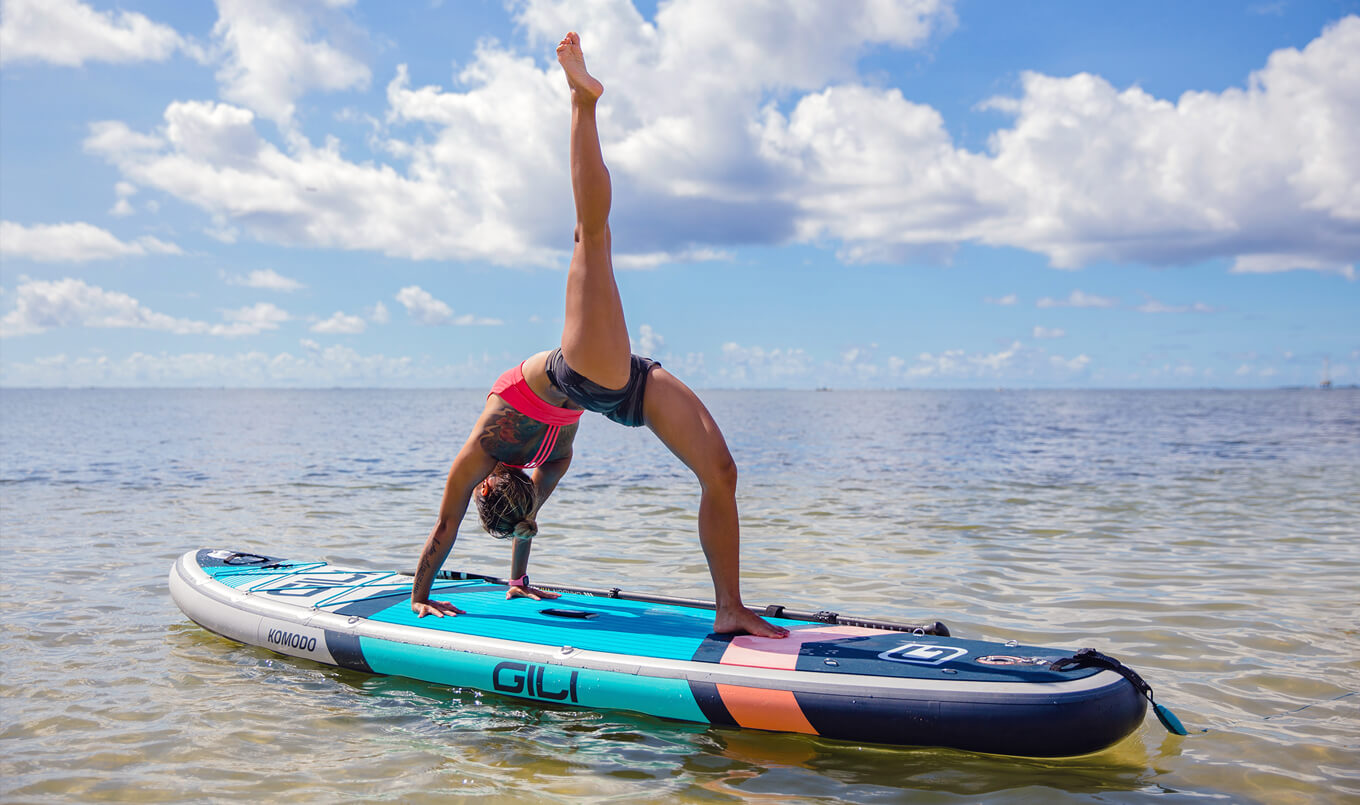Uw winkelwagen is leeg

Odds are high that you’ve heard some kind of buzz about stand up paddle boarding. You may not know about it, but SUP yoga is growing, as are other SUP hobbies like touring. So what’s all the fuss about?
There’s a reason that SUP is one of the fastest-growing water sports in the world. It thrives everywhere from low-key beach towns to small waterways in bustling big cities. Pro athletes use it to cross-train, and casual paddlers use it to catch up with friends while getting out on the water. The good news? SUP more than lives up to the hype. Here’s what it actually is - and why it’s so dang awesome.
Stand up paddle boarding, also known as SUP, is a popular water sport activity that involves standing up on a board and using a paddle to make your way through the water. You'll use your arms while standing or kneeling to propel you and your board forward.
Although SUP is similar to surfing and kayaking, you can use a paddle board for a myriad of activities such as surfing, adventuring, touring, fishing, yoga, racing, whitewater and more!
In stand up paddle boarding, riders stand up on the board and move through the water with a paddle. You can do all kinds of activities on a SUP, like yoga, fishing, racing, and touring. SUP offers many of the perks of kayaking, but with a much better vantage point than a kayak and much more ease of movement. You can SUP on just about any body of water.
It’s wildly popular, easy to learn, and incredibly accessible. While SUP’s current iteration is a newer trend, paddle boarding has existed in various forms for thousands of years.

While SUP boards might look like surfboards, the two sports are very different. For starters, SUP is much easier to learn. When you are paddle boarding, you’re standing most of the time, and you can paddle on flatwater or on waves. When you’re surfing, you start lying down, and you’ll need to hone your sense of the perfect moment to pop up among the waves. Surfing also requires tremendous balance, power, and concentration. Paddle boarding is much, much easier to pick up then surfing.
You can definitely surf your SUP, but it’s a bit different from traditional surfing. SUP surfers ride and catch waves while standing using a paddle - instead of lying down and paddling.
So, what is paddle boarding good for? It’s hard to know where to begin! There are many amazing reasons to try SUP:
SUP takes place in the great outdoors. As we all know, nature is an epic stress reliever, and, we could all stand to release a little tension. Nothing beats the sun on your face and face-to-face encounters with marine life.
Because SUP is usually a group activity, it’s also a great way to bond with your children, friends, and loved ones.. Oh yeah, and did we mention it’s super fun?
Forget spin class - SUP is an excellent full-body workout. SUP strengthens your core, increases your balance, and is great for cardio. And because it’s low impact, it’s accessible to everyone.

SUP is easy to learn at any age, fitness level, or walk of life. Young kids and grandparents alike, as well as people of every shape and size, will have a blast on a paddleboard.
Paddle boarding is easier than you might think! Most people can pick up the basics of how to paddle board within a day. Once you grasp balancing and basic paddle strokes, you’ve learned enough to have a good time. So don’t be afraid to give it a try - or, if you’re more experienced, to invite a SUP beginner pal along for the ride. They’ll look like pros in no time!
SUP may be new to you, but paddleboarding dates back thousands of years. Believed to have its roots in Africa, Polynesia, and South America, experts theorize that even then, people were using paddling for both work and play - from local transport to catching waves.
Modern paddleboards came to the forefront in the 1920s and 1930s. In the US, their popularity stemmed from Tom Blake, a surfer who designed lightweight paddle boards inspired by ancient Hawaiian boards. A few decades later, in the 1960s, Hawaiian surfers started using outrigger paddles while standing on their surfboards to get a better view of the incoming waves - and they realized they were onto something.
SUP, as we know it today, arrived in California in the early 2000s. At first, it was only practiced by surfers as a form of cross training. But by 2005, the world was hooked, and the rest is history! SUP is all the rage, and while it’s plenty of fun in its own right, it’s also favored as a more accessible alternative to surfing for older wave enthusiasts.

Ready to get on your SUP for the first time? Here are some quick tips to get you started right away:
Here are some more advanced tips if you’d like to learn even more about SUP.

So, now you know what stand up paddle boarding is. Indulge us in some sappiness for a moment: SUP is exactly what the world needs right now. It’s an accessible, affordable way to enjoy the outdoors, move your body, and connect with friends.
In a world overflowing with work deadlines, family drama, and tech overwhelm, there’s no better antidote than a hobby like SUP. The sport takes us back to the most basic foundations of human happiness: fresh air, sunshine, and the people you love most. When you paddle out on your board, you leave the busy modern world and narrow your sights on the present, with just your own body, your paddle, and nature. Your only job is to bask in the moment, and there’s nothing more powerful than that.
References:
https://en.wikipedia.org/wiki/Paddleboarding
https://americanhistory.si.edu/collections/search/object/nmah_1761098
Reacties worden goedgekeurd voordat ze verschijnen.